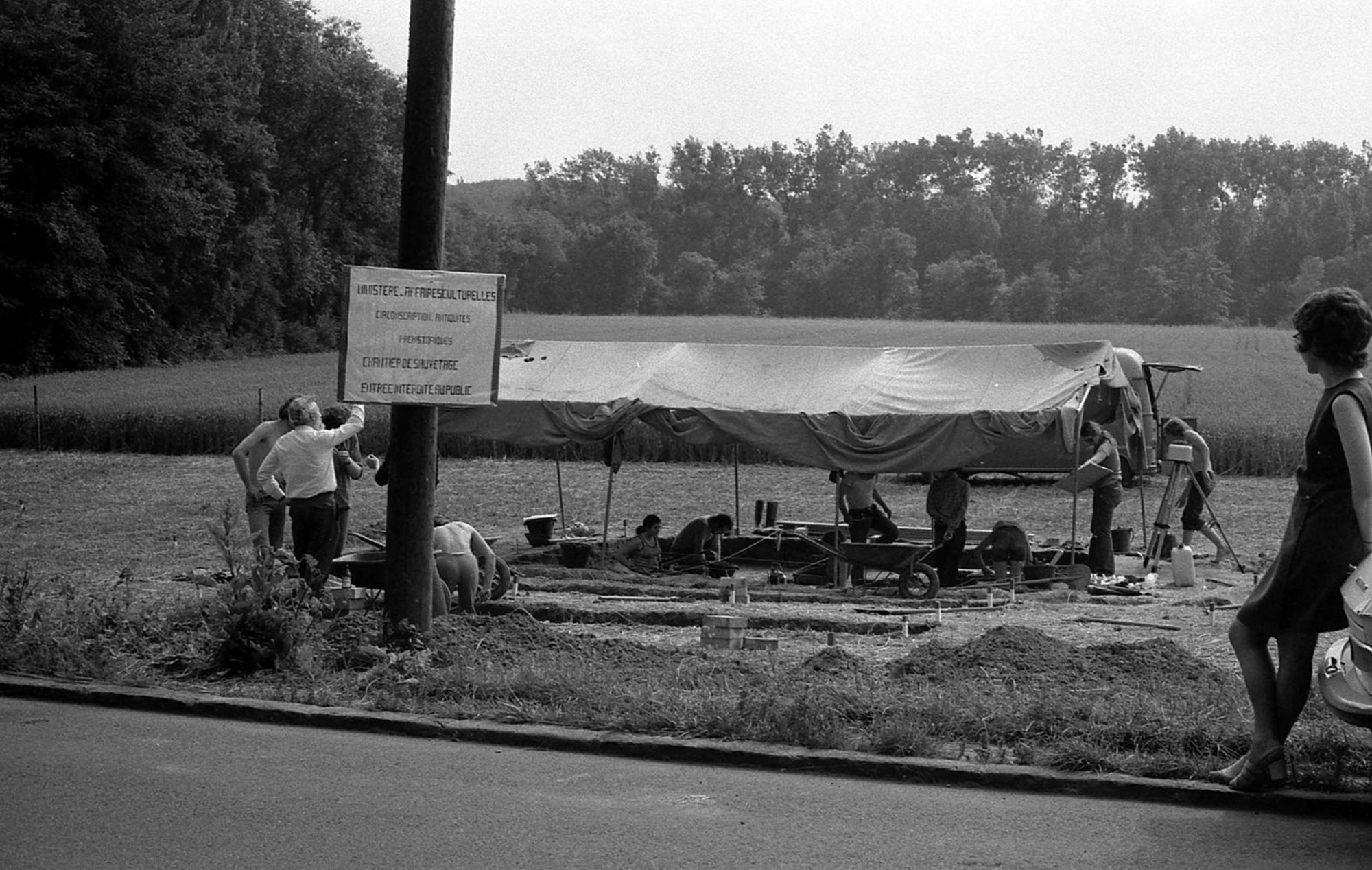
- Home
- Explore the site
- The archaeological site
- Four decades of research at Étiolles
We owe the discovery of Étiolles to passionate amateur archaeologists, alerted to its presence by knapped flint brought to the surface by ploughing. In 1971, a preliminary investigation was carried out with the Ministry of Culture’s local archaeology department. The first Magdalenian flint scatter was found, and so began more than 40 continuous years of discoveries.
From the very beginning, a remarkable deposit
The very first excavation, which took place in 1972, quickly revealed very well-preserved habitat structures. That same year, habitation W11 was uncovered, with its circle of stone slabs, large stone-covered hearth and very long blades. This first campaign also revealed the existence of several other Magdalenian levels in the stratigraphy, buried in alluvium from the Seine. It soon became clear that the quality of the Étiolles site equalled that of Pincevent, discovered some years earlier in 1964, and both of which can be considered among the best preserved in Europe from the Upper Palaeolithic.
Over subsequent years the high potential of the deposit was confirmed. The scale of the finds made in 2017 speaks for itself: approximately 10 superposed levels of occupation, approximately 30 hearths and 180,000 pieces of knapped flint (equal to more than two tonnes of flint) were recorded.
Protecting the site
As the discoveries began to add up, the conditions for the site’s exploration improved. Initially rescue excavations, they instead became planned excavations, with the land being purchased by the Essonne departmental authorities. A hangar provided shelter for the excavations and there was a building for laboratory work. Everything was now in place for long-term research.





